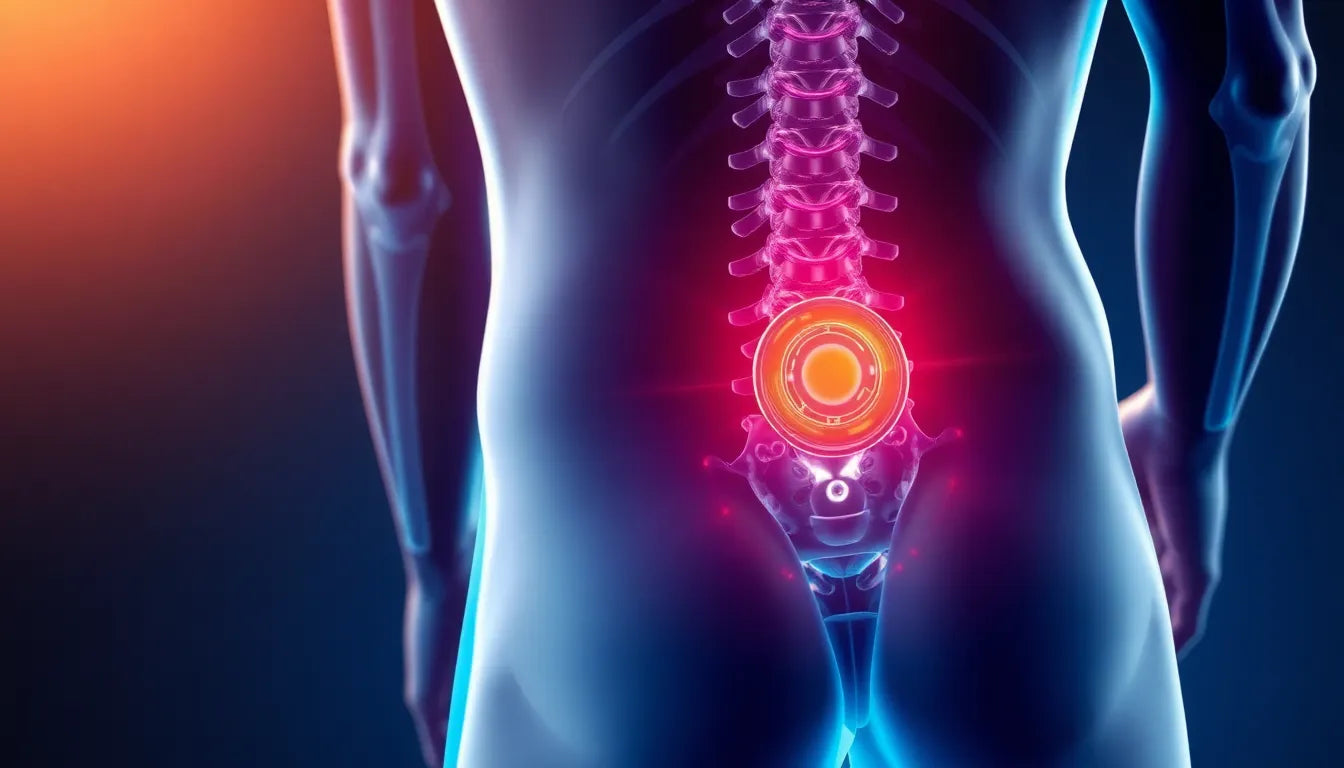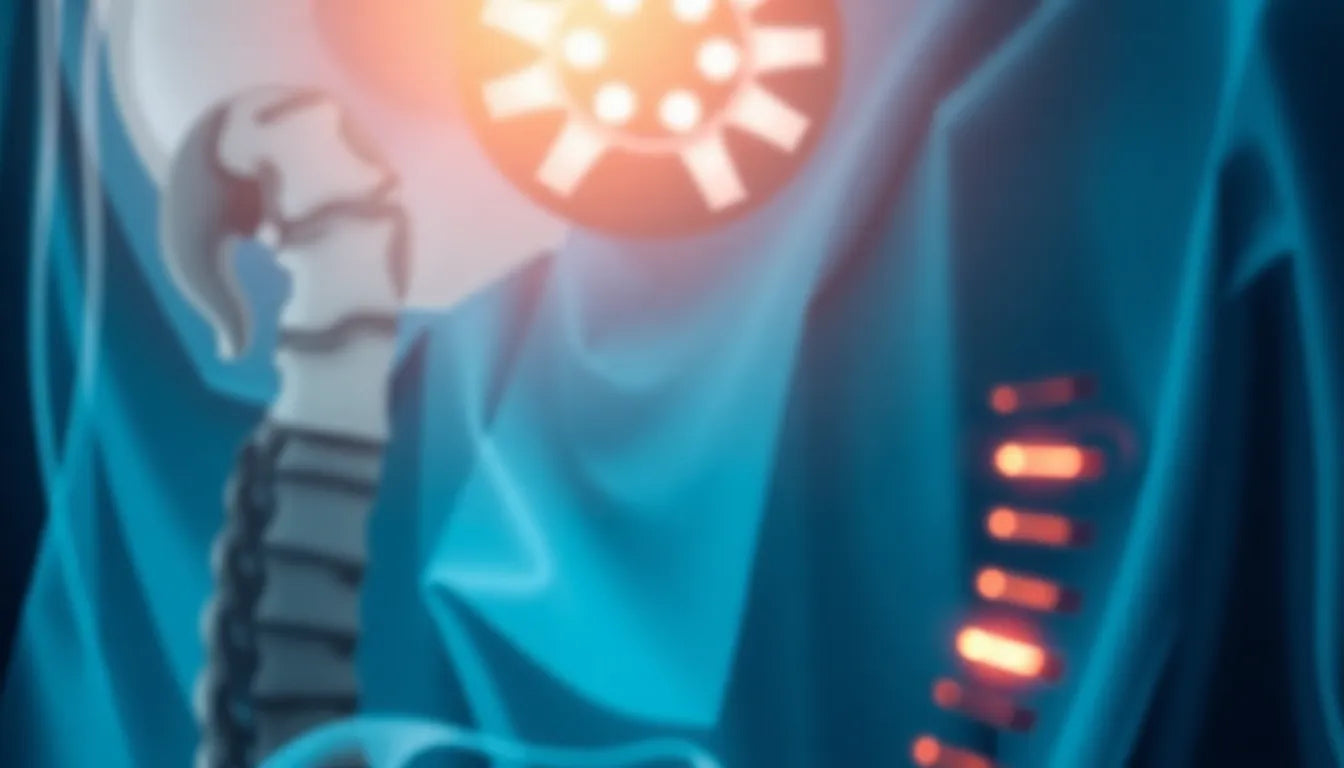Experiencing a herniated disc in the neck can be both painful and disruptive to daily life. A herniated disc, specifically in the cervical spine, occurs when the inner core of a disc pushes through its outer layer, often leading to a range of uncomfortable symptoms. This condition, medically referred to as a cervical herniated disc, can manifest through persistent neck pain, pain radiating down the arms, numbness, and even muscle weakness. Understanding the nature and prevalence of this condition is crucial for those affected, as it can stem from various causes, including age-related degeneration or acute injury.
initial treatment approaches for a herniated disc in the neck
When faced with a herniated disc in the neck, the initial approach typically involves conservative management. It's noteworthy that approximately 80% of cases are managed without the need for surgical intervention. This conservative treatment strategy may include a combination of rest, physical therapy, pain medications, and in some cases, steroid injections. The primary goal of these treatments is to alleviate symptoms and allow the body time to heal naturally.
Timely diagnosis and intervention play a pivotal role in managing a herniated disc effectively. Early intervention can prevent the condition from worsening and reduce the risk of further complications. Patients are encouraged to seek medical advice promptly if they experience symptoms indicative of a cervical herniated disc. By doing so, they can explore a range of treatment options tailored to their specific needs and circumstances.
While surgery is not the first line of treatment, understanding when it might become necessary is important. Surgery is typically considered when conservative treatments fail to provide relief or if there is significant neurological compromise, such as severe pain, motor weakness, or signs of myelopathy. For those facing these challenges, a comprehensive evaluation by healthcare professionals is essential to determine the best course of action.
In conclusion, while a herniated disc in the neck can be a daunting diagnosis, there are numerous pathways to explore for relief and recovery. By focusing on early intervention and appropriate treatment strategies, many individuals can manage their symptoms effectively and return to their daily lives with minimal disruption.
when is surgery necessary for a herniated disc in the neck?
Deciding when surgery is necessary for a herniated disc in the neck involves careful consideration of several factors. Surgery is typically reserved for cases where conservative treatments have not provided sufficient relief, or when there is significant neurological compromise. Symptoms that might prompt surgical intervention include persistent severe pain, motor weakness, loss of function, or signs of myelopathy, which is a condition affecting the spinal cord.
Healthcare professionals conduct thorough evaluations to determine surgical candidacy. These evaluations include a detailed medical history, physical examination, and imaging studies such as MRI or CT scans. These assessments help in understanding the severity of the condition and the potential benefits of surgical intervention. The goal is to ensure that surgery is only recommended when it is likely to significantly improve the patient's quality of life.
exploring surgical options for cervical herniated discs
Once the decision for surgery is made, understanding the available surgical options is crucial. Several procedures can address a herniated disc in the neck, each with its own benefits and considerations.
anterior cervical discectomy and fusion (ACDF)
ACDF is one of the most common procedures for treating herniated discs in the neck. This procedure involves making a small incision in the front of the neck to remove the damaged disc. After the disc is removed, the vertebrae are fused together using a bone graft or an implant. The fusion stabilizes the spine and alleviates pressure on the nerves.
The popularity of ACDF stems from its high success rate in relieving pain and improving function. However, it is important to note that this procedure may result in reduced neck mobility due to the fusion of vertebrae.
cervical artificial disc replacement
For patients seeking to preserve neck motion, cervical artificial disc replacement offers an alternative to fusion. In this procedure, the damaged disc is replaced with an artificial disc that mimics the natural movement of the spine. This approach can maintain neck flexibility and often results in quicker recovery times compared to fusion.
posterior cervical discectomy
In some cases, posterior cervical discectomy is a suitable option. This procedure involves accessing the herniated disc through an incision in the back of the neck. It is less commonly performed but can be beneficial for specific cases where the herniation is located towards the back of the spine.
corpectomy
For more extensive cases, a corpectomy may be necessary. This procedure involves the removal of part of the vertebral body along with the disc. It is typically used when multiple vertebrae are affected or when there is significant spinal cord compression.
recovery and potential risks of neck disc surgery
Understanding the recovery process and potential risks associated with neck disc surgery is essential for patients considering these procedures. Recovery timelines vary depending on the type of surgery and the individual patient's condition. Generally, patients can expect to return to normal activities within a few weeks to months.
Like any surgical procedure, neck disc surgery carries certain risks. These may include infection, nerve injury, or persistent pain. However, most patients experience significant relief from symptoms and an improved quality of life post-surgery. It is important for patients to discuss these risks with their healthcare provider to make an informed decision.
In conclusion, while surgery for a herniated disc in the neck is not always necessary, it can be a highly effective option for those who do not find relief through conservative treatments. By exploring the various surgical options and understanding the recovery process, patients can make informed decisions about their healthcare journey.
advancements in surgical techniques for herniated discs in the neck
In recent years, advancements in surgical techniques have significantly improved outcomes for patients undergoing surgery for a herniated disc in the neck. One of the key developments is the introduction of minimally invasive procedures. These techniques involve smaller incisions, which can reduce recovery time and minimize the risk of complications. Minimally invasive surgery often results in less postoperative pain and a quicker return to daily activities, making it an attractive option for many patients.
Another important advancement is the improvement in surgical tools and imaging technologies, which allow for more precise and effective surgeries. Enhanced imaging techniques, such as high-resolution MRI and CT scans, provide surgeons with detailed views of the cervical spine, aiding in accurate diagnosis and surgical planning. These technological improvements contribute to better surgical outcomes and patient satisfaction.
the importance of patient education and resources
Patient education plays a crucial role in the decision-making process for those considering surgery for a herniated disc in the neck. Understanding the available surgical options, potential risks, and expected recovery timelines empowers patients to make informed decisions about their healthcare. Healthcare providers should offer comprehensive resources, including brochures, online materials, and one-on-one consultations, to help patients navigate their treatment choices.
Visual aids, such as diagrams and animations, can be particularly beneficial in illustrating complex procedures like anterior cervical discectomy and fusion (ACDF) or cervical artificial disc replacement. These tools help patients visualize the surgical process and set realistic expectations for recovery and outcomes.
Aftercare is another critical aspect of patient education. Providing detailed recovery guides and follow-up care instructions ensures that patients are well-prepared for the postoperative period. These resources can help patients manage their recovery effectively and reduce the likelihood of complications.
frequently asked questions
What are the signs that surgery might be needed for a herniated disc in the neck?
Surgery may be necessary when there is persistent severe pain, neurological deficits, or when conservative treatments fail to provide relief. Signs such as motor weakness, loss of function, or symptoms of myelopathy are also indicators that surgery might be required.
How long does it take to recover from neck disc surgery?
Recovery times can vary depending on the type of surgery and individual patient factors. Typically, patients may return to normal activities within a few weeks to months. Minimally invasive procedures often result in quicker recovery times.
Are there non-surgical alternatives to manage a herniated disc in the neck?
Yes, non-surgical alternatives include physical therapy, pain medications, lifestyle modifications, and sometimes steroid injections. These conservative treatments can be effective for many patients and are often the first line of management.
What are the long-term outcomes of cervical disc surgery?
Many patients experience significant pain relief and improved function following cervical disc surgery. Long-term outcomes can vary based on individual factors and the type of surgery performed, but most patients report a better quality of life post-surgery.
In conclusion, advancements in surgical techniques and comprehensive patient education are pivotal in managing herniated discs in the neck. By leveraging these innovations and resources, patients can make informed decisions and achieve better health outcomes.
Sources
- Spine-health. "Cervical Herniated Disc Symptoms and Treatment Options."
- Mayfield Clinic. "Cervical Herniated Disc."
- Healthline. "Herniated Disk: Overview and More."
- Martin Ortho. "Cervical Herniated Disc."
- UF Health. "Cervical Herniated Disc."
- Houston Spine Surgeon. "Anterior Cervical Discectomy and Fusion (ACDF)."


















